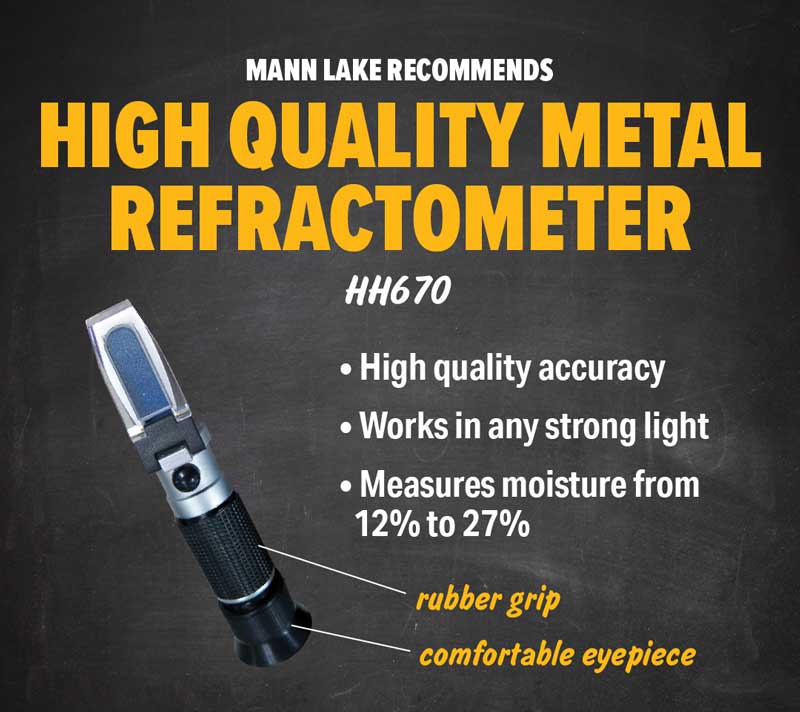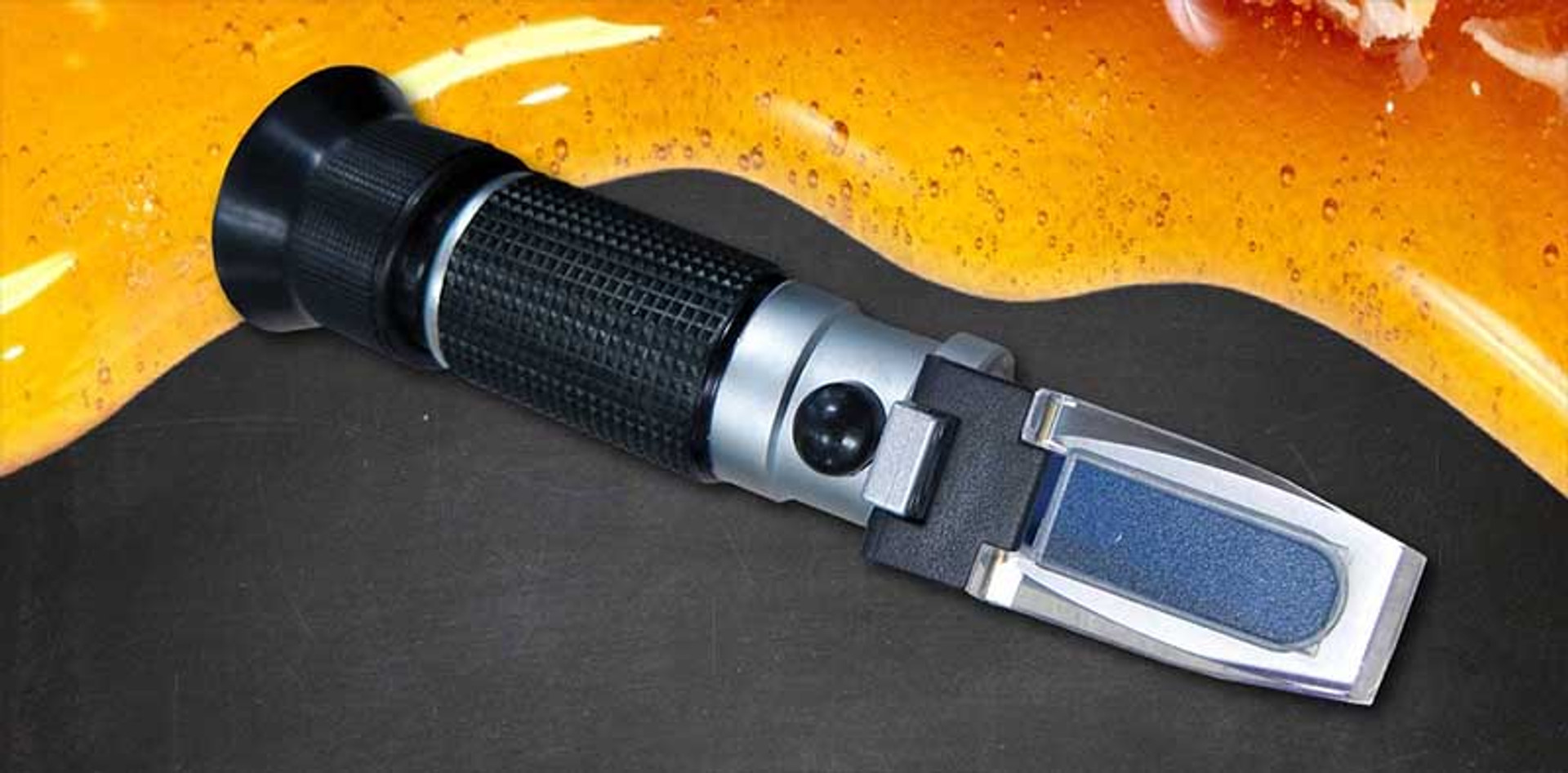Learn about the Refractometer
Honey harvesting is a large part of beekeeping. Have you ever wondered how beekeepers know when honey is ready to be reaped? Timing plays an important role. At the end of a nectar season, when the bees cap the honey they produce, it’s usually safe to take it. At this time, this is where science comes into play. There is a science to collecting consumable honey by using a Refractometer. A honey refractometer is a small, portable device used for measuring the moisture content of honey before it is harvested by the beekeeper.
Why use a honey refractometer before harvesting honey?
How can I prevent honey from fermenting?
How can I get information about the sugar content of the honey?
How can I know it's the right time to harvest the honey?
This is where a honey refractometer comes in. If honey is harvested too early, the moisture content may be too high. This in turn could lead to fermentation of the honey in the jars, and unnecessary wastage. If honey is stored incorrectly after extraction, its water content can increase. Frames of uncapped honey stored incorrectly prior to extraction can also absorb moisture and thus increase the water content of the honey. The percentage of water in honey depends on nectar origin, honey maturity, and environmental factors such as climate, weather, and storage.
The water content of honey largely determines if the honey can stay fresh. The lower the water content, the better the honey will keep. As a beekeeper, being able to produce honey with the ‘right’ moisture content is imperative, particularly if you intend to sell your honey or store it. Honey with low moisture content will crystallize, or granulate, rapidly, but other than that it rarely gives any trouble. Where things go wrong is when honey with high moisture content is harvested and subsequently stored incorrectly, as this can lead to fermentation of the honey. This would render it unsuitable for resale as anything other than baker’s honey.

The ideal moisture content of honey
The ideal moisture content of honey is around 17 - 18%, and ideally, not greater than 20%. However, some honey types will tolerate a very slightly higher moisture content without going bad.
How a honey refractometer works
'Refraction' describes the movement of light as it enters a liquid - basically, light changes direction upon contact with a liquid. However, the movement of light will depend on the content/concentration of the liquid. With honey, the amount of sugar directly impacts how the light reacts as it passes through the honey, and a prism inside the device. The refractometer measures the movement of light and correlates the measurements to a scale.
Refractometers are not only used by beekeepers, they are used in the food industry and in scientific laboratories. In homes, they may also be used in jam making.
How to use a honey refractometer
Three key points:
- Remember to calibrate your refractometer before use.
- Only a small amount of honey is required, but ensure the plate is completely covered. There is no point using too much - this will simply create more mess than necessary.
- Clean the refractometer after use with a damp cloth.
A honey refractometer is an underrated but necessary tool for any beekeeper who hopes to produce or sell good quality, consumable honey. If you have plans of harvesting commercial-grade honey, this is one tool you don’t have a choice but to invest in and learn how to use.
Be sure to buy the Calibration Fluid Microtube for the Metal Refractometer!

